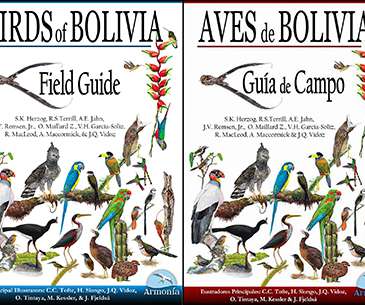Birds of Bolivia: Field Guide–A Book Review
10,000 Birds
MARCH 3, 2020
.” The answer, as discerning Neotropical birders know, is: “What is Bolivia?” ” The book in question is Birds of Bolivia: Field Guide , edited and written by Sebastian K. Bolivia doesn’t come up much in discussions of birding travel. More on Species Accounts. The fairly large size (6.5″












Let's personalize your content